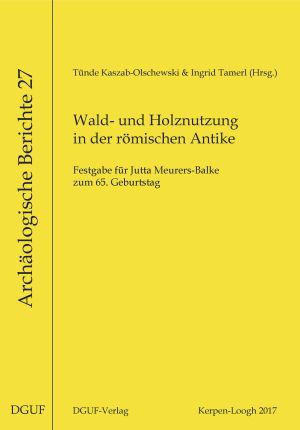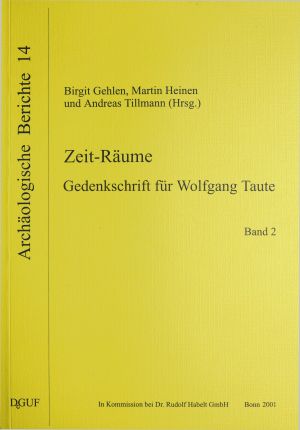Tegtmeier, Ursula
Neolithische und bronzezeitliche Pflugspuren in Norddeutschland und den Niederlanden
In her MA thesis Ursula Tegtmeier assembles the prehistoric ploughing traces from northern Germany and the Netherlands that were known until 1987. In the context of her studies she conducted ploughing experiments with her fellow students and archaeologists. The interpretation of results obtained, as well as an extensive literature survey make out integral parts of this publication. This important work is rounded off with a comprehensive catalogue.
Das merowingerzeitliche Gräberfeld von Dortmund-Asseln
Early medieval cemeteries are rare in Westphalia, even more so in the Ruhr area. Therefore, it was particularly gratifying that in Dortmund-Asseln, during a systematic excavation, fourteen female and ten male individuals could be examined in predominantly undisturbed and, by Westphalian standards, well preserved and excellently equipped inhumation graves. In addition, a horse grave and a dog grave were unearthed. Despite the most difficult soil conditions, the excavator Bernhard Sicherl achieved a maximum of information about the archaeological features, which – combined with the rich find material – provide an excellent basis for the analysis of the graves. The cemetery of Dortmund-Asseln is of particular importance, because models for conceivable social structures could be worked out here on a small scale, which can also contribute to the understanding of ways of life in other places in the Merovingian Period.
Das Schlüsselloch-Gräberfeld am Oespeler Bach: Befunde und Funde der jüngeren Bronzezeit am Hellweg in Oespel und Marten, Stadt Dortmund
This work presents part of the results of an excavation carried out from 1991 to 1995 at the Oespeler Bach in the west of the city of Dortmund. The archaeological investigations yielded surprisingly diverse results. Apart from the prehistoric burial ground expected at this site, Neolithic, Middle Bronze Age and Roman Iron Age settlement features were found here. In the present volume, the Late Bronze Age cemetery was analysed.
A total of 269 burials and 69 ditches were documented – exclusively cremation burials in urns or organic containers, of which about a quarter was integrated into a ditch. Keyhole-shaped grave ditches occur most frequently and are the southernmost representatives of their type. Investigations of the cremations and the remains of the pyre complete the picture of the burial ground, which was used in two phases (Ha A to Ha B2/3).
Römische Landnutzung im antiken Industrierevier der Osteifel
From the beginning of the Roman Imperial period, the area between Mayen on the edge of the Eifel and Andernach on the Rhine experienced an enormous increase in its economic activity. In a short time, an industrial area developed there, from which wide areas in the Roman north-western provinces were supplied with high-quality basalt lava millstones, light tuff and later also heat-resistant ceramics. Quarries were newly established, land and water routes were expanded, existing outlets were extended and others were still to be developed. Setbacks in the 3rd and 4th centuries were followed by further booms.
How could the numerous workers and their families be fed, and what consequences did the success of the stone and energy-intensive pottery industries have for the environment? In order to clarify this, two Roman villas on the northern edge of the Mayen millstone quarries were investigated with geophysical measurements, excavations, geoarchaeological and botanical studies, and their entire surroundings were explored. The results are presented in this book. The inhabitants of the villa Mendig, »Im Winkel« were themselves involved in the production of millstones. In late antiquity, a surface drainage system there probably kept a transhipment point for millstones on the Segbach dry, while a fortified storage building ensured the supply of the quarrymen. Quarry owners resided in the villa Mendig, »Lungenkärchen«. It turned out to be an axial courtyard with an impressive water basin. Inspections led to the discovery of the burial ground belonging to »Lungenkärchen« with monuments made of Lorraine limestone as well as the discovery of a previously unknown vicus »Im Terl«.













